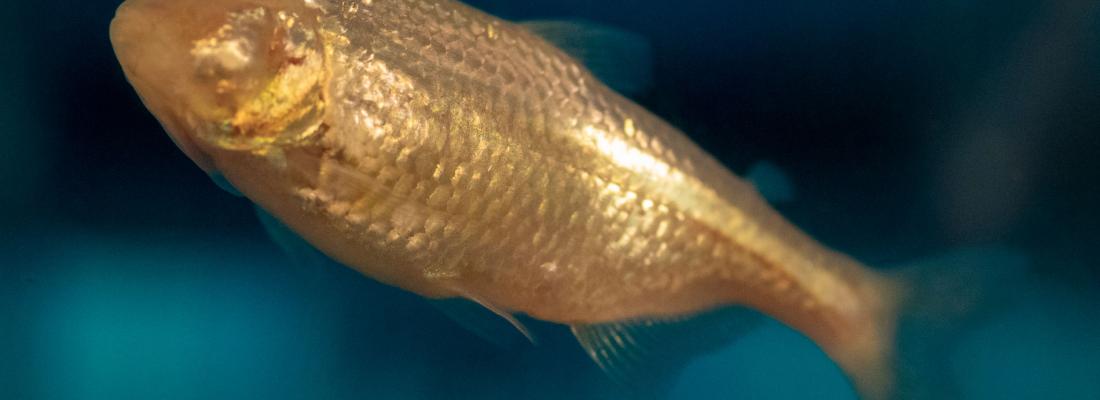Biodiversity Reading time 2 min
Mysterious accessory chromosome involved in sex determination in Pachón cavefish
Published on 08 September 2021

Photo legend: Pachón cavefish
The cells of biological organisms carry the genetic information responsible for life in the form of paired type-A chromosomes. The latter must remain unaltered to ensure individual survival and species persistence. For example, humans have 23 pairs of A chromosomes. However, many other species may have another chromosome type: B chromosomes. Unlike A chromosomes, B chromosomes do not systematically occur in all individuals of a given species. They are often referred to as accessory or non-essential chromosomes because they are not necessary to species persistence. Indeed, B chromosomes have long been viewed as genomic parasites, and their biology largely remains a mystery.
Learning about chromosomes: from A to...B
In most vertebrates, genetic information from the A chromosomes, and specifically the sex chromosomes, determines an individual’s sex. For example, in mammals, female sex development requires a pair of XX chromosomes and male sex development requires a pair of XY chromosomes. In some fish species, certain individuals possess B chromosomes, whose occurrence tends to be sex biased. However, the role of such chromosomes in sex determination was never studied before now.
B chromosome affects sex determination in Pachón cavefish
Researchers from INRAE, CNRS[1], and the University of Paris-Saclay studied the B chromosome’s function in a small, blind cavefish species (Astyanax mexicanus) found in Mexico’s Pachón cave system. This fish is used as a model for studying evolutionary adaptations to life underground, where complete darkness reigns.
The researchers discovered that the B chromosome was omnipresent in male fish but extremely rare in female fish. They then sequenced the genome of a male fish, focusing on a gene found on the B chromosome: gdf6b. The expression of this gene was subsequently studied over the course of development. At the start of development, male and female fish displayed no differences in their gonads (i.e., sex organs). However, over time, the researchers observed strongly sex-biased gdf6b expression that was restricted to the male gonads. When gdf6b was knocked out, it induced male-to-female sex reversal in B-carrying males. Consequently, this gene appears to play an essential role in sex differentiation in Pachón cavefish.
This study is the first to show that a B chromosome can trigger sex determination in a vertebrate species. The B chromosome appears to behave somewhat like the mammalian Y chromosome—it contains copies of a key gene involved in male gonad development and is vertically transmitted between males. However, questions remain about this “B-sex” chromosome because it does not occur in all Astyanax mexicanus populations. Further research is therefore needed to better understand the evolution of sex determination in this species.
[1]A collaboration among scientists at the Paris-Saclay Institute of Neuroscience (CNRS/University of Paris-Saclay), the Institute of Functional Genomics (CNRS/Inserm/University of Montpellier), and the Institute of Evolutionary Sciences of Montpellier (CNRS/IRD/University of Montpellier).
Reference
Boudjema Imarazene, et al. A supernumerary “B-sex” chromosome drives male sex determination in the Pachón cavefish, Astyanax mexicanus Current Biology September 07, 2021. DOI: https://doi.org/10.1016/j.cub.2021.08.030
